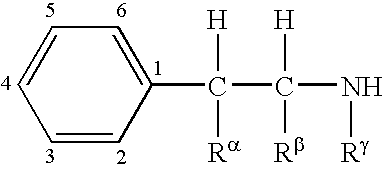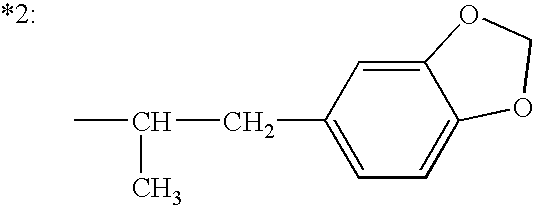Compositions and methods for treating obesity and related disorders
a technology for obesity and related disorders, applied in the field of compositions and methods for the treatment of various conditions, disorders, diseases, etc., can solve the problems of severe side effects, withdrawal symptoms, and withdrawal symptoms of patients, and achieve the effects of enhancing weight loss, reducing side effects of other agents, and reducing unwanted side effects
- Summary
- Abstract
- Description
- Claims
- Application Information
AI Technical Summary
Benefits of technology
Problems solved by technology
Method used
Image
Examples
example 1
[0160]A combination of Topiramate and Bupropion was administered to a patient seeking to lose weight. Subject 1: A male patient suffering from obesity had a starting body weight of 245 lbs., an initial Body Mass Index (BMI) of 36 and a Baseline Blood Pressure of (BP) 122 / 60. Patient sought treatment for weight loss. Patient was administered a combination of Bupropion and Topiramate according to the following dosing regimen:[0161]150 mg of Bupropion (slow release) and 25 mg of Topiramate (administered at night) for week 1;[0162]150 mg of Bupropion (2 times a day) and gradual increase of Topiramate to a 100 mg (administered at night) over the next four weeks and then maintain dosage for a specific period of time (approximately 10 weeks);[0163]150 mg of Bupropion (2 times a day) and 150 mg of Topiramate for a specific period of time.
[0164]A first follow-up visit occurred approximately 4.5 weeks after starting treatment. Patient weighed 228 lbs. and had a BP of 116 / 60. In a second follo...
example 2
[0166]A patient seeking to lose weight was initially administered a combination of Phentermine and Topiramate. Subject 2: A male patient suffering from obesity had a starting body weight of 226 lbs., an initial BMI of 29 and a BP of 122 / 90. This patient had a history of hypertension and was currently taking 20 mg of Lotensin daily. Patient was administered the typical starting doses of Phentermine and Topiramate ending with a dose of 15 mg of Phentermine in the morning and 100 mg of Topiramate at night. During a follow-up visit, patient stated that he was unable to maintain the treatment continuously because he was suffering from various side effects, such as erection dysfunction (ED), insomnia, and anxiety.
[0167]In response, patient discontinued taking Phentermine and instead received a daily dose of 300 mg of Bupropion XL (extended-release) in the morning while continuing with the 100 mg of Topiramate at night.
[0168]In follow up visits over the next several months, patient had les...
example 3
[0170]A combination of Topiramate and Bupropion was administered to a patient seeking to lose weight. Subject 3: A female patient suffering from obesity had a starting body weight of 284 lbs., an initial BMI of 45½ and a BP of 122 / 76. This patient also suffered from hypertension, sleep apnea, depression and pulmonary hypertension. Patient was receiving the following baseline medications: 80 mg / day of Lasix, 10 mg / day of Lisinopril, 10 mg / day of Lexapro, 25 mg of Coreg (2× / day), and 0.5 mg of Xanax (3× / day). Patient was administered a combination of Bupropion and Topiramate according to the following dosing regimen:[0171]150 mg of Bupropion (extended release) in the morning and 25 mg of Topiramate (administered in the afternoon) and gradually increasing to a 100 mg over the next four weeks and then maintained for a specific period of time;[0172]about half-way through the treatment, Phentermine was added at 5 mg / day. Patient initially started taking 81 mg / day of ASA and instructed to ...
PUM
| Property | Measurement | Unit |
|---|---|---|
| weight loss | aaaaa | aaaaa |
| time | aaaaa | aaaaa |
| time | aaaaa | aaaaa |
Abstract
Description
Claims
Application Information
 Login to View More
Login to View More - R&D
- Intellectual Property
- Life Sciences
- Materials
- Tech Scout
- Unparalleled Data Quality
- Higher Quality Content
- 60% Fewer Hallucinations
Browse by: Latest US Patents, China's latest patents, Technical Efficacy Thesaurus, Application Domain, Technology Topic, Popular Technical Reports.
© 2025 PatSnap. All rights reserved.Legal|Privacy policy|Modern Slavery Act Transparency Statement|Sitemap|About US| Contact US: help@patsnap.com



